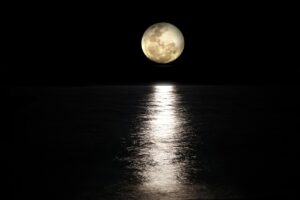Chasing the 2024 Solar Eclipse: A Guide to Viewing Times Across the U.S.

On Monday, April 8, a highly anticipated solar eclipse will cross North America from Mexico to Canada, with the path of totality spanning 15 U.S. states. While the entire continent will witness a partial solar eclipse, those fortunate enough to be within the narrow 115-mile-wide path of totality will experience a breathtaking total solar eclipse. This celestial event promises to captivate millions of skywatchers and inspire a renewed sense of awe and appreciation for the cosmos.
Path of Totality and Eclipse Timings

The path of totality will begin in Texas at 1:27 p.m. CDT and conclude in Maine at 3:35 p.m. EDT, traversing through Oklahoma, Arkansas, Missouri, Kentucky, Illinois, Indiana, Ohio, Pennsylvania, New York, Vermont, and New Hampshire. Totality will last anywhere from a mere 19 seconds in Luna Pier, Michigan, to nearly four minutes in Cleveland, Ohio.
For those outside the path of totality, a partial eclipse will still be visible. In Michigan, for example, the partial eclipse will commence around 2 p.m., with maximum coverage between 3:10 and 3:15 p.m. The percentage of coverage will vary depending on location, with Ann Arbor experiencing 98.7% and Mackinac Island seeing 85.5%.
Eclipse enthusiasts can use interactive maps and dedicated websites to determine the exact timings and duration of the eclipse for their specific location and learn about the various phases and phenomena associated with the event. These resources provide valuable information to help skywatchers plan their eclipse-viewing experience and make the most of this rare celestial occurrence.
What to Expect During the Eclipse
During the total eclipse, observers can expect a temperature drop of up to 10 degrees, the appearance of stars and planets, and changes in animal behavior as they react to the sudden darkness. The eerie silence and twilight-like conditions that accompany totality create an atmosphere of otherworldly beauty and wonder.
However, it is crucial to wear ISO 12312-2 safety standard eclipse glasses throughout the event, removing them only during the brief period of total darkness to avoid potential eye damage. Looking directly at the sun, even during a partial eclipse, can cause permanent harm to the eyes.
While cloud cover may obscure the eclipse in some areas, particularly in Texas, spectators will still experience a noticeable darkening of the sky during maximum totality. Even if the eclipse is not fully visible, the unique interplay of light and shadow will create an unforgettable ambiance.

Tips for Eclipse Watchers

Those planning to travel for the eclipse should prepare for crowded highways and arrive at their viewing locations well in advance. Experts advise against attempting to watch the eclipse while driving, as it can be extremely dangerous. Instead, find a safe spot to park and enjoy the celestial spectacle.
It is essential to ensure that eclipse glasses meet the ISO 12312-2 safety standard to protect the eyes from potential damage. Observers should only remove the glasses during the brief period of total darkness and put them back on as soon as the sun begins to reappear. Children should be closely supervised to ensure they use their eclipse glasses correctly.
For those unable to travel to the path of totality, local astronomy clubs, observatories, and science centers may host eclipse viewing events, providing a safe and educational environment to experience the partial eclipse. These events often feature expert commentary, telescopes with solar filters, and other engaging activities.
The 2024 Solar Eclipse: A Celestial Spectacle

With millions poised to witness this rare celestial event, the 2024 solar eclipse promises an unforgettable experience. As the moon’s shadow traverses the continent, it will offer a unique opportunity for people to come together and marvel at the universe’s wonders. The shared sense of anticipation and awe will create lasting memories for all participating.
The 2024 solar eclipse reminds us of the intricate dance between the sun, moon, and Earth, showcasing the delicate balance and awe-inspiring beauty of our cosmic neighborhood. It is a testament to celestial mechanics’ predictable yet extraordinary nature, as scientists can accurately forecast these events centuries in advance.
As communities gather to witness this celestial spectacle, it is an opportunity to foster a sense of unity, curiosity, and appreciation for the natural world. The eclipse will inspire the next generation of scientists, astronomers, and space enthusiasts, igniting a passion for exploration and discovery. As we look to the sky on this momentous day, we are reminded of our place in the grand tapestry of the universe and the endless wonders that await our discovery.



